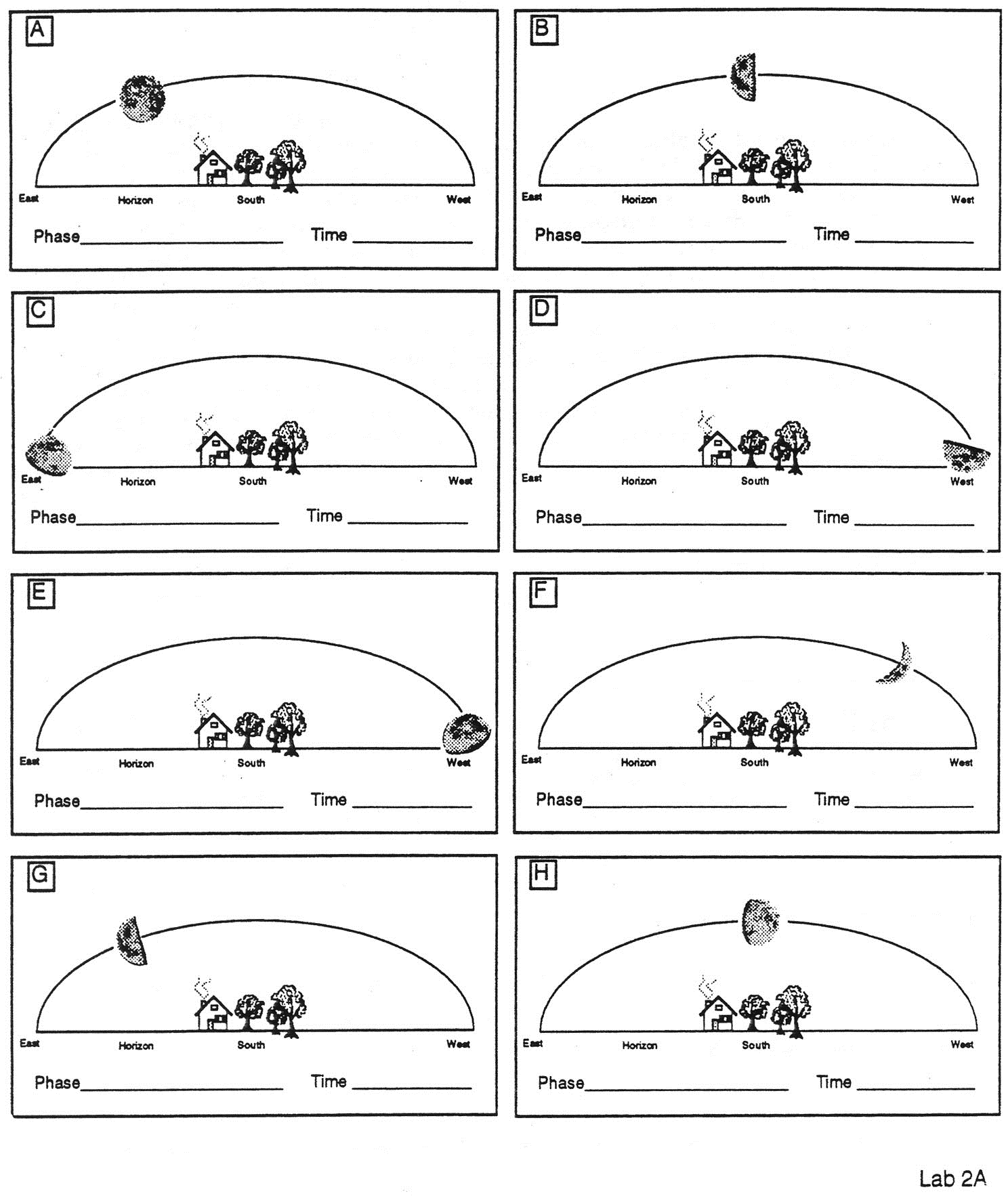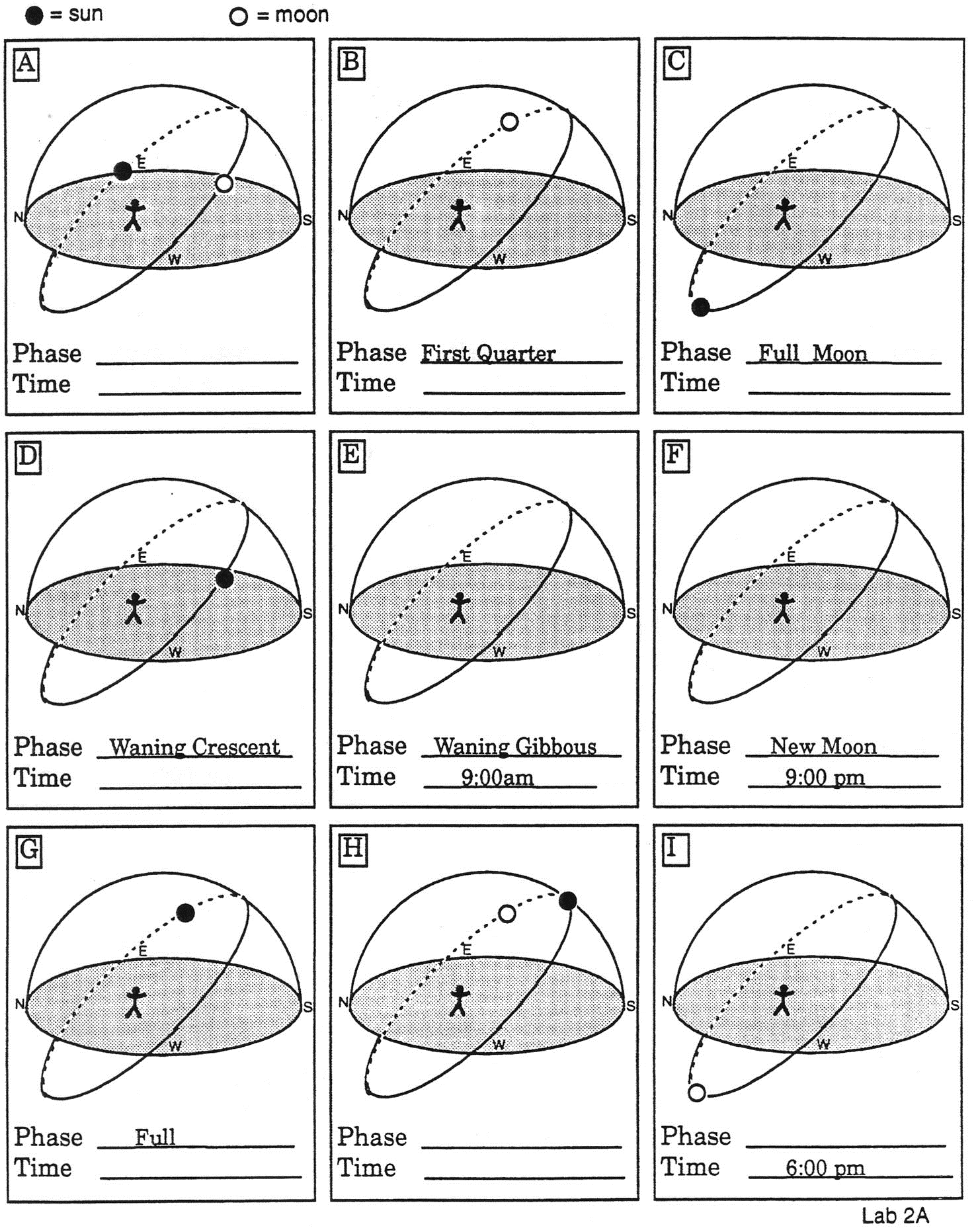
Throughout the month, the Moon’s appearance in the night sky changes. Sometimes we see a Full Moon, sometimes we see just a sliver of the Moon. What causes the different phases is the position of the Moon in its orbit.
Learning Objectives:
- Explain what causes the phases of the moon.
- Know the moon-earth-sun angle for all eight phases.
- Be able to determine the approximate time of day by the position of the Sun.
- From the positions of the Sun and Moon, be able to determine the phase of the moon.
Introduction:
Since the Moon is a sphere, at any given point in its orbit, exactly half of the Moon is illuminated. However, as the Moon orbits the Earth we see a varying proportion of the sunlight side of the Moon. This is why we see the Moon in different phases throughout the month. Each of the phases of the Moon can be defined by the angle between the Moon and Sun in the sky. Figure 1 will help in understanding the Moon during the different phases, and why we see the phase we do. When the Moon is in between us and the Sun, so that there is nearly a zero degree separation, we see a New Moon. Because the orbit of the Moon is tilted in relation to the Earth’s orbit around the Sun, a New Moon can still be as much as 5.2 degrees away from the Sun, thus why we don’t have a solar eclipse every month. A crescent moon is 45 degrees from the Sun, a quarter moon is 90 degrees from the Sun, a gibbous moon is 135 degrees from the Sun, and the Full Moon is 180 degrees away from the Sun. These angles are summarized in Table 2 along with a picture of each phase.
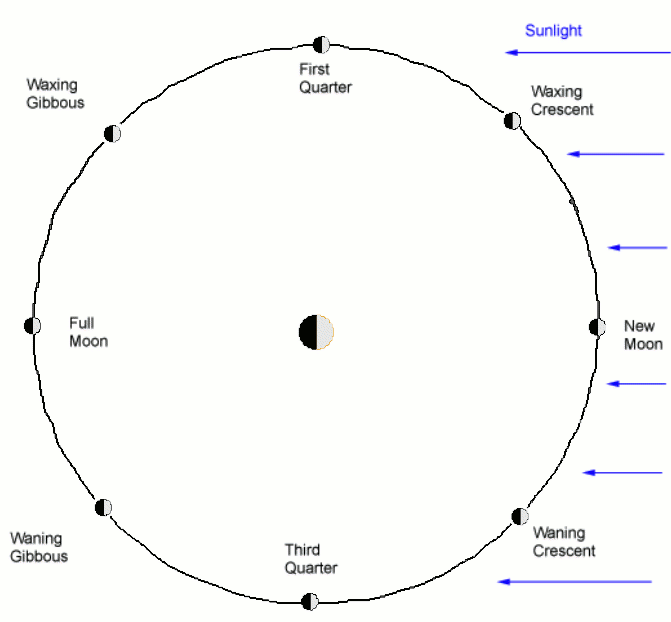
The two crescent, quarter, and gibbous moons are further differentiated by on what side of the Sun the Moon is. When the Moon is to the east of the Sun, its said to be lagging behind the Sun. If you watch the Sun and Moon move across the sky, it will appear that the Sun is ahead and leading while the Moon lags behind. A Moon that is to the east of the Sun is called a waxing moon. The term “waxing” means growing. As a waxing moon continues to move around in its orbit, we see more and more of the sunlight side of the Moon, so it appears to grow in the sky. When the Moon is to the west of the Sun, it’s said to be ahead of the Sun, and the Sun lags behind. Such a moon is called a waning moon. The term “waning” means shrinking. As a waning moon continues to move in its orbit, we see less and less of the sunlight side of the Moon, so it appears to shrink in the sky.
Table 1: Illustrations of the phases of the Moon and their angles from the Sun.
|
Moon |
Phase |
Angle relative to the Sun |
 |
New Moon |
0 degrees |
 |
Waxing Crescent |
45 degrees behind |
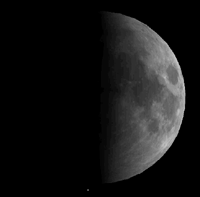 |
1st Quarter |
90 degrees behind |
 |
Waxing Gibbous |
135 degrees behind |
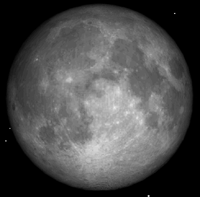 |
Full Moon |
180 degrees |
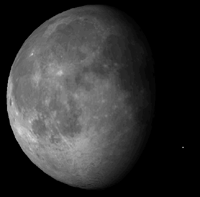 |
Waning Gibbous |
135 degrees ahead |
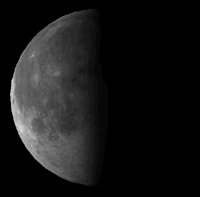 |
3rd Quarter |
90 degrees ahead |
 |
Waning Crescent |
45 degrees ahead |
Since the time of day is determined by the position of the Sun, where a given phase of the moon will appear in the sky at a specific time of day can also be determined. The exact location of the Sun in the sky varies from season to season, but for this lab we will assume that we are near one of the equinoxes so that the Sun will rise right from exactly due east at 6:00am and set exactly due west at 6:00pm. In this lab, we will only consider eight different times of day, 3:00am/pm, 6:00am/pm, 9:00am/pm, and 12:00am/pm. Note that three of these times are at night. The Sun during these times is below the horizon, but we can still locate its position. Figure 2 shows the Sun’s position in the sky for these eight different times. These eight different positions are all 45 degrees apart from each other, just like the eight positions for the moon in its different phases are 45 degrees apart. This will make determining the moon-earth-sun angle easier.
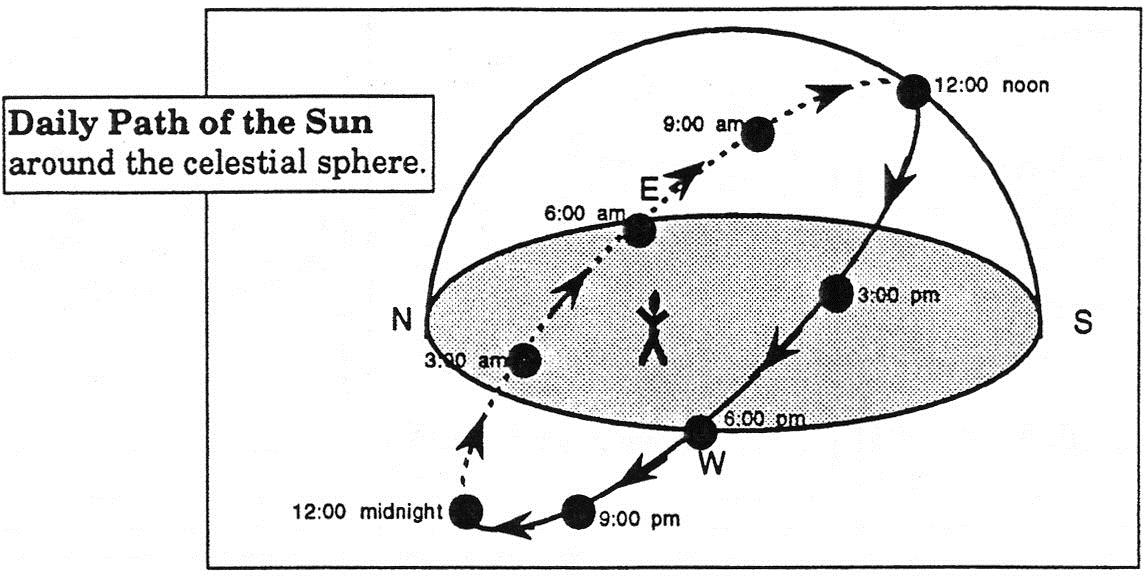
Procedures:
On the following three pages, there are horizon diagrams that show two of the following: position of the Moon, position of the Sun, time of day, and phase of the moon. With two of these pieces of information, determine the other two. Below is an example. Follow the example closely and talk to your instructor if you still have questions.
In the diagram on the left, the position of the Sun in the SE means that the time of day is 9:00am. We can determine this by comparing the position of the Sun in this diagram with the positions and times from Figure 2. It’s stated that the phase of the moon is “1st Quarter.” By looking at Table 1, we see that this means that the Moon is behind the Sun by 90 degrees. Since each of the eight positions from Figure 2 are 45 degrees apart, the Moon must be at the 3:00am position. So now we fill in the missing data and get the completed diagram seen to the right.
 |
 |
Complete the missing information in the following diagrams.

In these diagrams, you are shown an image of the moon in the sky. The diagrams are from the position of the stick-figure in the previous diagrams while facing south. From the shape of the moon, and its position, determine the phase of the moon and the time of day. Be aware that what is shown in the diagram is the sunlight part of the moon.
